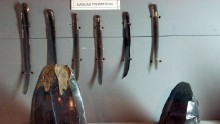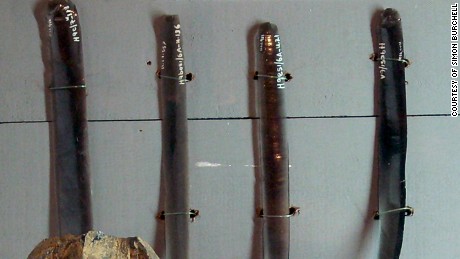
| Stones & Pebbles | Certificate & Analysis | Shipping | ContactĬopyright © Pertaş Metal Ltd. Please click on the pictures to enlarge them. Don Crabtree produced obsidian blades for surgery and other purposes, and has written articles on the subject. One study found that obsidian incisions produced narrower scars, fewer inflammatory cells, and less granulation tissue in a group of rats. Scar width, however, was significantly less in the obsidian wounds at 7, 10, and 14. Tensile strength of the two wound types was not different at 7, 14, 21, and 42 days.
#Obsidian scalpel vs steel microscope skin
Even the sharpest metal knife has a jagged, irregular blade when viewed under a strong enough microscope when examined even under an electron microscope an obsidian blade is still smooth and even. Each rat received two parallel 8-cm dorsal skin incisions, one with an obsidian scalpel and the other with a surgical steel scalpel (no. Obsidian is hard and brittle it therefore fractures with very sharp edges, which had been used in the past in weapons, and are still used as surgical scalpel blades.Ĭurrent useObsidian has been used for blades in surgery, as well-crafted obsidian blades have a cutting edge many times sharper than high-quality steel surgical scalpels, the cutting edge of the blade being only about 3 nanometers thick. The inhibition of atomic diffusion through this highly viscous and polymerized lava explains the lack of crystal growth.

It is 3 times sharper than diamond and between 500-1000 times sharper than a razor or a surgeons steel blade resulting in easier incisions and fewer microscopic ragged tissue cuts.
#Obsidian scalpel vs steel microscope free
Obsidian is commonly found within the margins of rhyolitic lava flows known as obsidian flows, where the chemical composition (high silica content) induces a high viscosity and polymerization degree of the lava. red heart free patterns Surprisingly, the edge of a piece of obsidian is superior to that of a surgeons steel scalpel. It is produced when felsic lava extruded from a volcano cools rapidly with minimum crystal growth.

In the past, it was used to manufacture cutting and piercing tools, and it has been used experimentally as surgical scalpel blades.Obsidian is a naturally occurring volcanic glass formed as an extrusive igneous rock. Obsidian is hard, brittle, and amorphous it therefore fractures with sharp edges. Together with rapid cooling, this results in a natural glass forming from the lava. The high viscosity inhibits diffusion of atoms through the lava, which inhibits the first step ( nucleation) in the formation of mineral crystals. These flows have a high content of silica, granting them a high viscosity. It is commonly found within the margins of rhyolitic lava flows known as obsidian flows.


Obsidian is produced from felsic lava, rich in the lighter elements such as silicon, oxygen, aluminium, sodium, and potassium. Obsidian- a type of volcanic glass - can produce cutting edges many times finer than even the best steel scalpels. carat) and the processes it has been through. An obsidian-scalpel incision heals more quickly because the blade causes less damage to the skin and other tissues. The price will depend on the size of the piece, the quality (i.e. If you have newly shopped your piece of black obsidian, the price can be a good indicator of how genuine it is. To the naked eye the scalpel cut seemed smooth, but to the body’s healing process it might as well have been the Grand Canyon. Try holding your piece up against a light to see whether it is translucent or opaque. The cut edges were jagged, uneven, irregular and messy. The steel scalpel cut at the microscopic level was pure mayhem. Obsidian is a type of volcanic glass that produces a much finer blade than conventional steel. Quick facts: Obsidian, General, Category, Identification. The Obsidian cut was smooth, even and even.


 0 kommentar(er)
0 kommentar(er)
